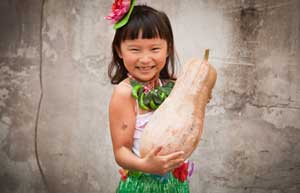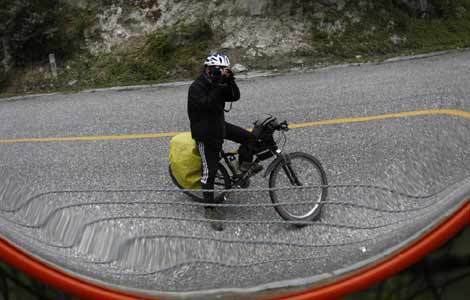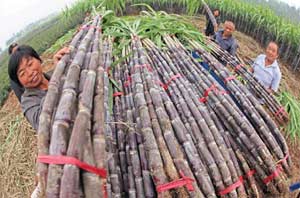Little-celebrated wines offer more than sour grapes
Updated: 2011-10-08 13:08
By Stephen Quinn (China Daily)
|
|||||||||
Most people know the classic grape varieties like chardonnay and shiraz.
They are like lead actors, the stars of most wine tastings.
Other varieties tend to play lesser roles, consigned to bit parts.
Typically, they are blended with other varieties because they are considered to be inadequate on their own.
A tasting of lesser-known grape varieties in Hong Kong last month opened my eyes to some new possibilities. The tasting took place at a new wine bar, California Vintage.
First on offer was the 2009 Cass "rockin' one" from the Paso Robles region of California. It was a 60:40 blend of rousanne and marsanne.
These Rhone region varieties complement each other well. The wine has an acid zing that would cut easily through oily dishes like fried dumplings.
Aromas of honey and green apples matched beautifully with a citrus tang in this well-balanced and integrated wine. It retails for $29.
Next up was the 2005 Chentella grenache from the Fiddletown region of California. It has an earthy nose and a warm and affectionate embrace of silky tannins and dark fruit flavors.
Grenache is not one of my favorite grape varieties, and is usually blended with shiraz and mouvedre in the Rhone region of France to produce a more rounded drink.
But this grenache stands proudly on its own feet. The tannins are still there, suggesting this is a wine worth putting down for a few more years. Yet it is also friendly and approachable now, the fruit acids balancing the tannins. Retail price at the wine bar: $28.
The next wine, the 2007 Three carignane ($30) from the Contra Costa region, is another relatively rare variety. In Australia carignane is usually blended with other reds, and it is one of the varieties used in rioja in Spain. But in California, it is offered as a single variety.
This wine tasted and smelled of sour cherries and had a savory finish. It was more approachable than the Chentella Grenache.
The company's website says it comes from vines Italian settlers planted in the 19th century. The old vines explain its long length.
Another unusual suspect - the phrase came from wine bar manager Susan Darwin - was the 2008 mataro ($30), also from the Three vineyard at Contra Costa.
Mataro originated in the Catalan region of Spain and is also known as mouvedre in France or monastrell in other parts of Spain.
This grape produces tannic wines that can be high in alcohol (the Three version is almost 15 percent) and is usually blended with grenache in the Rhone region of France. The latter softens the harsh tannins of the mouvedre.
This wine stood proudly alone, and had a nose of dried thyme with hints of violet and tobacco, and medium length.
Tempranillo is called Spain's regal grape and it is the main variety in the blend known as rioja. Spanish Conquistadors are believed to have brought the grape to the Americas in the 17th century.
The 2007 Yorba tempranillo ($42) from the Amador region of California is almost black in color, high in alcohol (14.9 percent) and has heavy tannins from the 10 months in a combination of new (25 percent) and old French oak.
This is a wine that needs time to soften. It needs to be paired with hearty meat dishes. Only 348 cases were made so it might be difficult to find on the Chinese mainland.
The tasting's last wine was the 2007 Acorn sangiovese from the Russian River region of northern California ($29). This is another big wine that needs time to reveal its full beauty.
It is spicy in the mouth, and then the big tannins take over. The tannins are the result of 17 months in a variety of oak (Hungarian, American and French), with 38 percent of the oak new.
This is a wine that needs to be consumed with a solid red meat dish, after half a decade of patience.
In all, it was an evening of pleasant surprises. Would I forsake varietal superstars for these unusual suspects? Perhaps - it depends on the wine. Overall, I remain faithful to my favorites: pinot noir, riesling, chardonnay and cabernet sauvignon.










